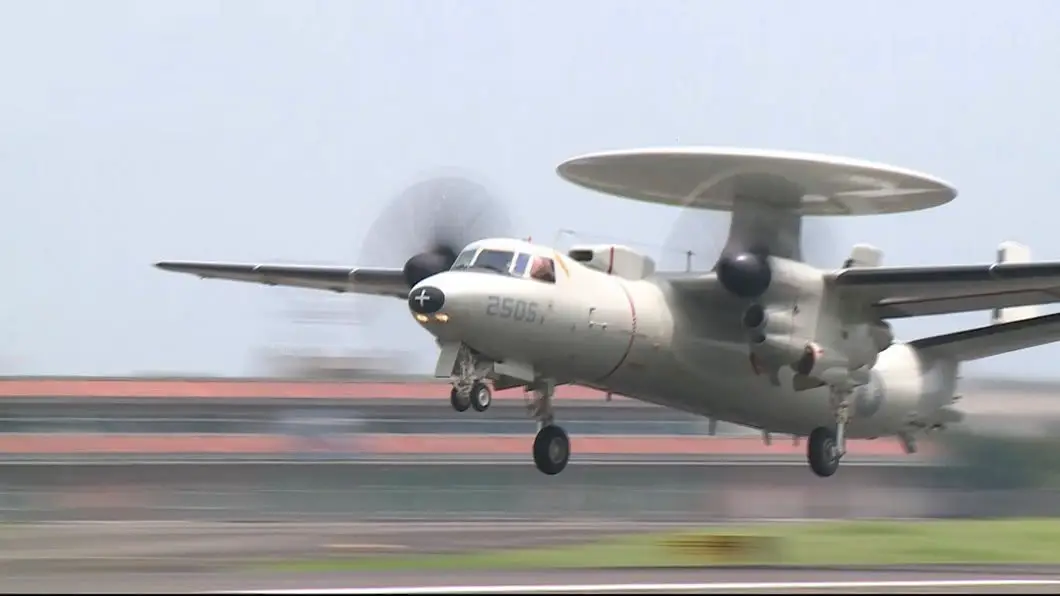Northrop Grumman and Taiwanese aerospace company Aerospace Industrial Development Corporation (AIDC) have officially announced a strategic partnership aimed at enhancing the reconnaissance, search, and early warning capabilities of Taiwan’s E-2K Hawkeye airborne early warning (AEW) aircraft fleet. The Republic of China Air Force (RoCAF) faces the imperative task of bolstering its capabilities to counter the growing obsolescence of the E-2K fleet, a critical component in safeguarding Taiwan’s airspace. The E-2K fleet plays a pivotal role in Taiwan’s aerial surveillance and command-and-control functions, effectively monitoring airspace and identifying potential threats. Recognizing the aircraft’s indispensable role in maintaining national security, AIDC and Northrop Grumman have entered into a memorandum of understanding (MOU) to explore potential upgrade plans. The MOU, signed on 23 February at the 2024 Singapore Airshow, outlines their commitment to supporting the RoCAF in fortifying its reconnaissance and early warning capabilities.
A key aspect of the collaboration involves the possibility of upgrading the existing E-2K fleet to the latest configuration, aligning with Taiwan’s long-term vision of acquiring new E-2D aircraft in the future. This upgrade would not only extend the service life of the E-2K but also enhance the air force’s ability to conduct effective reconnaissance, search, and early warning operations. Additionally, the upgrade is expected to streamline fleet management and address concerns related to disappearing business sources. AIDC Chairman Moudy Hu and Northrop Grumman CEO of Taiwan Fisher Huang were present at the signing of the MOU, highlighting the significance of the collaboration. The agreement was signed on behalf of AIDC by Alex Tsai, Vice President of Military Programs & New Business, and Janice Zilch, Vice President of Northrop Grumman. The potential upgrade program, if realized, is anticipated to follow a pattern similar to the successful “F-16V upgrade program.”

To provide context, Taiwan initially acquired four E-2T aircraft from the United States in November 1995. The commissioning of two new E-2K Hawkeyes in April 2006 marked a significant step forward for the RoCAF’s airborne early warning capabilities. The subsequent arms deal in 2008 approved the upgrade of the four E-2T aircraft to the Hawkeye 2000 configuration, a process completed in two batches between 2010 and 2013. However, the maintenance challenges of the E-2K became evident in 2022 when the Ministry of National Defense was compelled to decommission one airframe due to prohibitively costly repairs following a mishap that caused landing gear damage. This incident underscored the importance of a comprehensive upgrade program to address both obsolescence and maintenance limitations.
The Northrop Grumman E-2 Hawkeye is an American all-weather, carrier-capable tactical airborne early warning (AEW) aircraft. This twin-turboprop aircraft was designed and developed during the late 1950s and early 1960s by the Grumman Aircraft Company for the United States Navy as a replacement for the earlier, piston-engined E-1 Tracer, which was rapidly becoming obsolete. The aircraft’s performance has been upgraded with the E-2B and E-2C versions, where most of the changes were made to the radar and radio communications due to advances in electronic integrated circuits and other electronics. The fourth major version of the Hawkeye is the E-2D, which first flew in 2007. In addition to U.S. Navy service, smaller numbers of E-2s have been sold to the armed forces of Egypt, France, Israel, Japan, Mexico, Singapore and Taiwan. Variants of the Hawkeye have been in continuous production since 1960, giving it the longest production run of any carrier-based aircraft.












